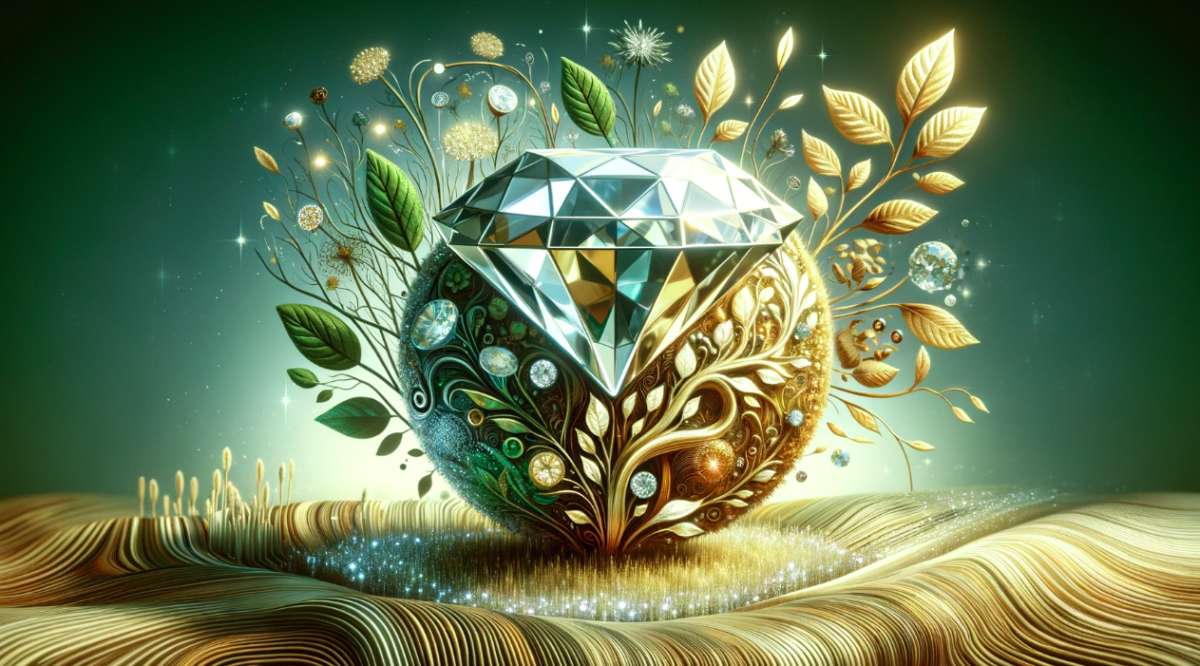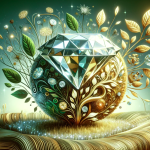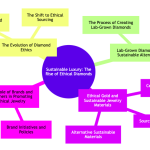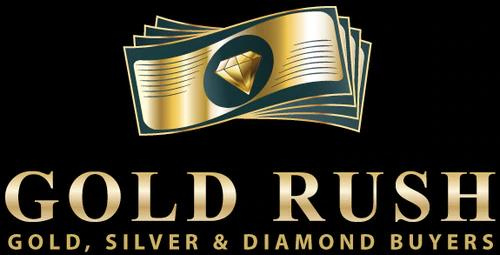The Evolution of Diamond Ethics
The diamond industry has undergone a significant transformation, evolving from a sector once riddled with ethical concerns to one that increasingly embraces sustainability and ethical practices. This shift reflects a growing awareness of the impact of diamond mining on both people and the planet. If you would like to know more, or if you are looking for the best diamond buyer Centennial has to offer - Gold Rush Centennial is your best bet!
Key Takeaways:
- Historical Exploitation: Traditional diamond mining has faced criticism for labor and environmental issues.
- Ethical Awakening: The industry is moving towards more ethical sourcing methods.
- Consumer Influence: Buyers are demanding diamonds that align with their values.
- Lab-Grown Popularity: Lab-grown diamonds are emerging as a sustainable choice.
- Ongoing Challenges: Despite progress, the industry continues to face ethical challenges.
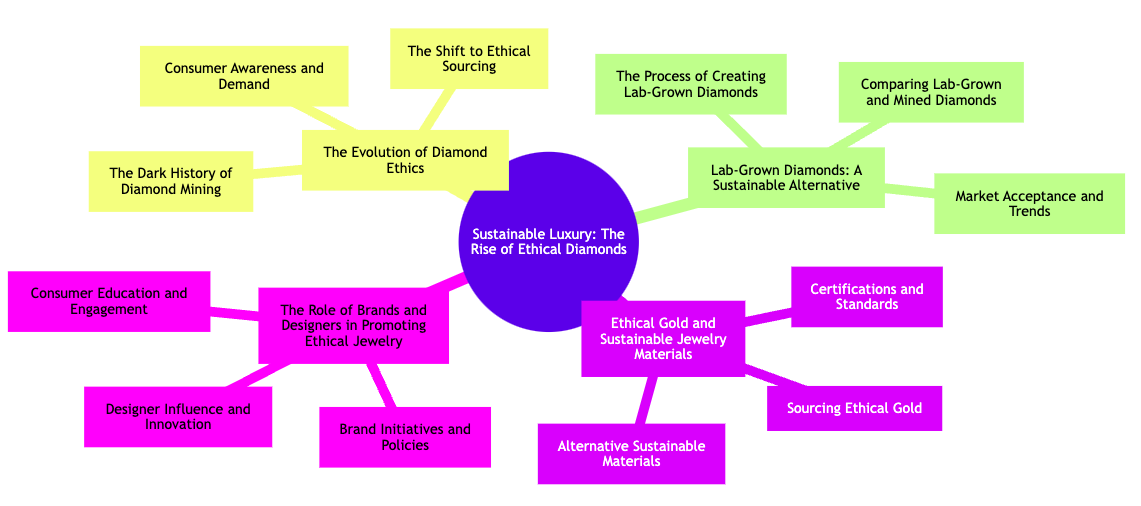
The Dark History of Diamond Mining
The history of diamond mining casts a long shadow over the glittering beauty of the stones themselves. For decades, this industry has been tainted by severe ethical issues. Exploitative labor practices, environmental degradation, and the funding of conflicts have been rampant, painting a grim picture of the cost of diamond mining. This dark past includes:
- Child Labor: The use of underage workers in hazardous mining conditions.
- Conflict Diamonds: Profits from diamond sales funding wars and conflicts, particularly in African nations.
- Environmental Harm: Large-scale ecological damage due to mining activities, including soil erosion, deforestation, and water pollution.
- Health Risks to Workers: Miners facing severe health risks due to unsafe working conditions and lack of proper equipment.
These issues have not only raised ethical concerns but also prompted a global call for change, urging the industry to adopt more humane and environmentally friendly practices.
The Shift to Ethical Sourcing
In recent years, the diamond industry has begun to pivot towards ethical sourcing, a transformative shift driven by a combination of regulatory pressure and a moral awakening. This shift is characterized by:
- Fair Labor Practices: Ensuring safe working conditions and fair wages for miners.
- Environmental Conservation: Implementing mining practices that minimize ecological impact.
- Traceability: Establishing clear, transparent supply chains from mine to market.
- Community Development: Investing in the communities where diamonds are mined, ensuring that mining benefits local populations.
These changes are not just about compliance - they represent a fundamental realignment of the industry with modern ethical standards, reshaping the very foundation of how diamonds are sourced and sold.
Consumer Awareness and Demand
In the current era, consumers have emerged as powerful agents of change in the diamond industry. Their growing awareness and insistence on ethical practices have become a driving force in reshaping the market. Key factors influencing consumer behavior include:
- Transparency: Desire for clear information about the origins and journey of their diamonds.
- Ethical Certification: Preference for diamonds certified by organizations that ensure ethical sourcing.
- Sustainable Choices: Increasing interest in alternatives like lab-grown diamonds that offer a more sustainable option.
- Social Responsibility: A trend toward supporting brands that are committed to ethical practices and social responsibility.
This shift in consumer preferences is not just a passing trend; it's a profound change in mindset. Buyers today seek beauty in their diamonds, integrity, and responsibility, creating a demand that is reshaping the diamond industry toward a more ethical and sustainable future.
Lab-Grown Diamonds: A Sustainable Alternative
Lab-grown diamonds have emerged as a game-changer in the diamond industry, offering a sustainable and ethical alternative to traditional mining. These diamonds, created in controlled environments, provide a viable solution to many of the ethical issues associated with diamond mining.
- Reduced Environmental Impact: Lab-grown diamonds have a smaller carbon footprint.
- No Conflict Mining: They eliminate the risk of conflict diamond issues.
- Cost-Effective: Often more affordable than mined diamonds.
- Quality and Authenticity: Comparable in quality to natural diamonds.
- Sustainable Future: Represent a step towards a more sustainable jewelry industry.
The Process of Creating Lab-Grown Diamonds
Lab-grown diamonds are created using advanced technological processes that replicate the natural conditions under which diamonds form. These methods, such as High-Pressure High Temperature (HPHT), and Chemical Vapor Deposition (CVD), produce diamonds that are physically, chemically, and optically identical to mined diamonds. (1)
Comparing Lab-Grown and Mined Diamonds
- Environmental Footprint: Lab-grown diamonds have a significantly lower environmental impact.
- Ethical Considerations: Lab-grown diamonds avoid the ethical dilemmas of mining.
- Price Point: Often more affordable than their mined counterparts.
Market Acceptance and Trends
Lab-grown diamonds are gaining acceptance in the market, with consumers increasingly recognizing their benefits. The trend towards ethical consumption, coupled with advancements in diamond-growing technology, is positioning lab-grown diamonds as a desirable and responsible choice for modern consumers.
Ethical Gold and Sustainable Jewelry Materials
In the realm of sustainable luxury, the use of ethical gold and other sustainable materials in jewelry making is not just a trend - it's a commitment to responsible craftsmanship. These materials represent a conscious shift in the industry towards practices that respect both people and the planet.
Sustainable vs. Traditional Jewelry Materials
|
Material |
Traditional Jewelry |
Sustainable Jewelry |
|
Gold |
Often sourced from large-scale mining |
Ethically mined or recycled |
|
Diamonds |
Mined, sometimes with ethical concerns |
Lab-grown or ethically sourced |
|
Other Metals |
Conventional mining practices |
Recycled or responsibly mined |
|
Gemstones |
Traditional mining, may involve conflict |
Ethically sourced or lab-created |
Sourcing Ethical Gold
Ethical gold sourcing involves practices that minimize environmental impact and ensure fair labor conditions. This process includes using recycled gold or sourcing from small-scale mines that adhere to strict environmental and ethical standards. Ethical gold not only supports sustainable practices but also adds a layer of value and story to the jewelry.
Alternative Sustainable Materials
Beyond gold, the jewelry industry is embracing a variety of sustainable materials. These include recycled metals, lab-grown gemstones, and ethically sourced natural stones. Each material brings its unique qualities and contributes to the creation of jewelry that's both beautiful and responsible.
Certifications and Standards
Certifications and standards play a crucial role in verifying the ethical credentials of jewelry materials. Organizations like the Responsible Jewellery Council and Fairtrade Gold set guidelines and assure that materials are sourced ethically and sustainably.
The Role of Brands and Designers in Promoting Ethical Jewelry
Brands and designers are at the forefront of the ethical jewelry movement. Their choices and creations can significantly influence industry trends and consumer preferences.
Brand Initiatives and Policies
Many brands are adopting initiatives and policies that emphasize ethical sourcing and sustainable practices. These range from using recycled materials to ensuring their supply chains are free from conflict and exploitation.
Designer Influence and Innovation
Designers play a pivotal role in shaping the ethical jewelry landscape. Through innovative designs that incorporate sustainable materials, they are redefining luxury and setting new standards in the industry.
Consumer Education and Engagement
Educating and engaging consumers is key to advancing the ethical jewelry movement. Brands and designers are taking steps to inform buyers about the origins and impact of their purchases, fostering a more conscious and responsible approach to jewelry buying.
Conclusion: Embracing Ethical Diamonds for a Sustainable Future
In conclusion, the rise of ethical diamonds and sustainable jewelry materials marks a significant shift towards a more responsible and conscious luxury industry. By choosing ethical diamonds and sustainable materials, consumers, brands, and designers collectively contribute to a future where luxury is synonymous with responsibility and sustainability.
Gold Rush Denver plays a pivotal role in this evolving landscape, embracing the trend of lab-grown diamonds and providing valuable insights into the story and value of their jewelry. Their willingness to both purchase and sell lab-grown diamonds reflects a keen understanding of the current market's direction toward ethical choices. By offering information and options in line with these trends, Gold Rush Denver ensures that their clients are well informed and supported in making choices that align with the movement toward sustainable luxury. As the industry progresses, the importance of adapting to and embracing these sustainable and ethical alternatives becomes increasingly clear, paving the way for a future where luxury and sustainability coexist harmoniously.
References:
International Gem Society, Lab-Grown Diamonds FAQ, https://www.gemsociety.org/article/lab-grown-diamonds-faq/
